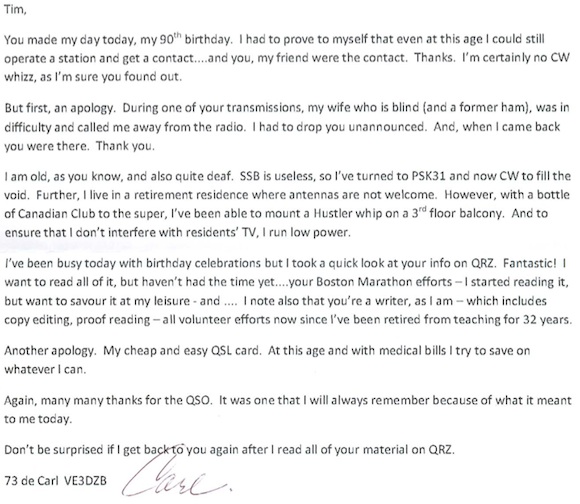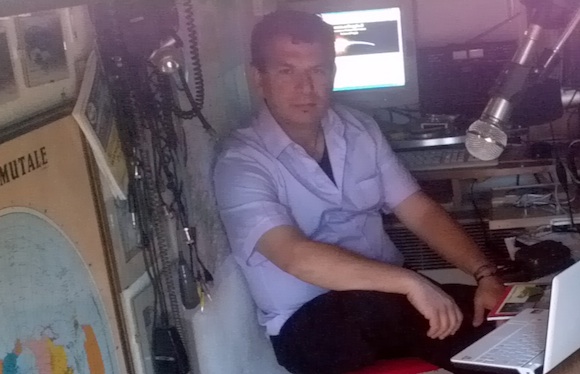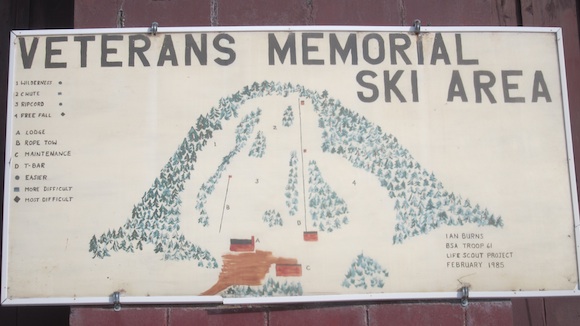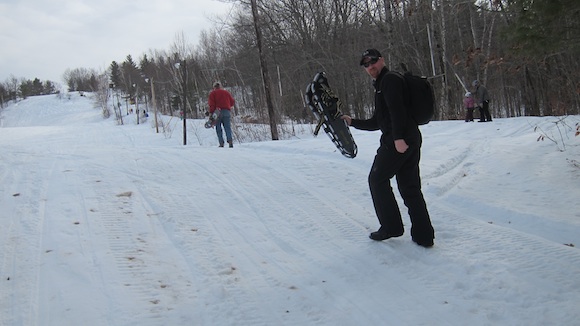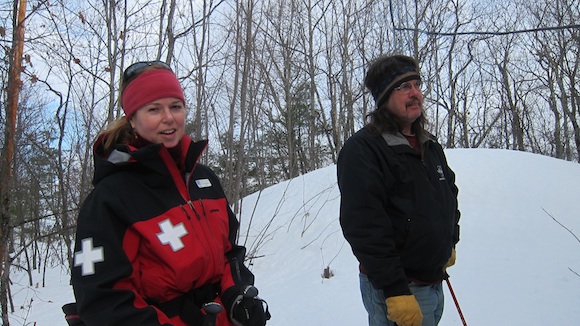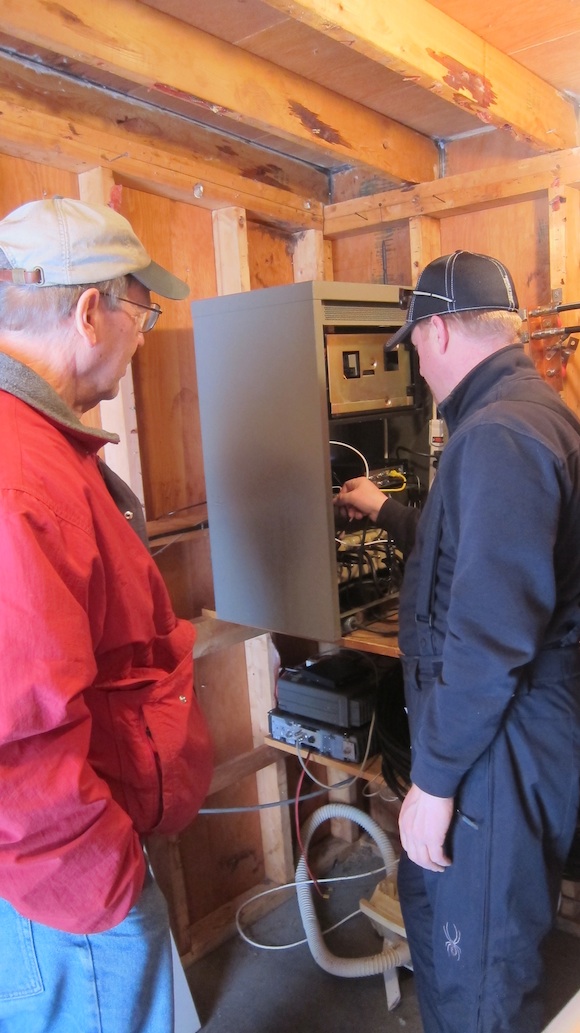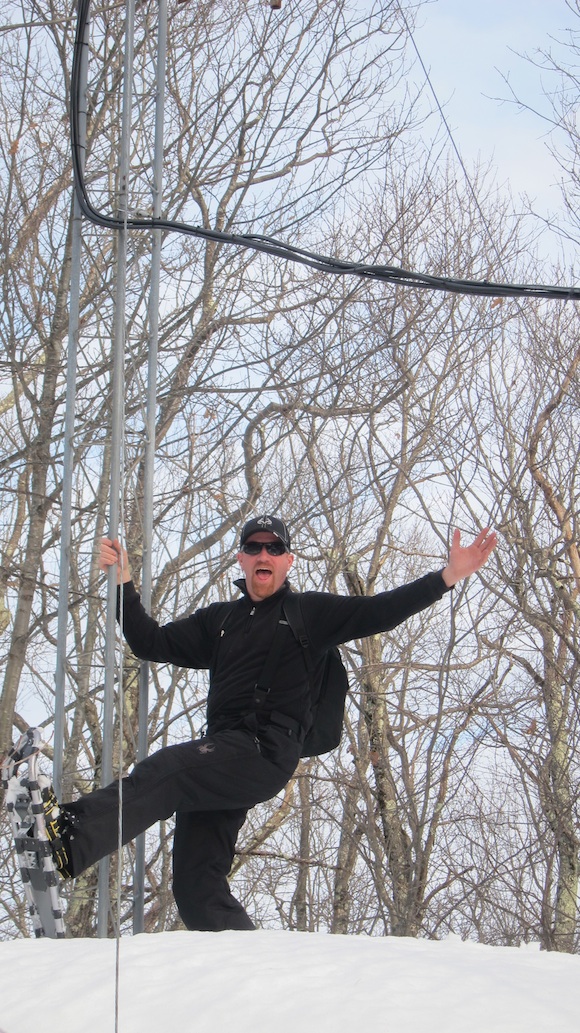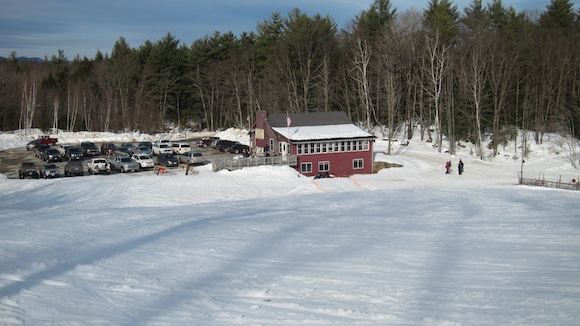“What are you doing?”
Jim Cluett, W1PID, was calling me at 10:00 a.m. on this brilliant sunny day just after St. Patrick’s Day. Just hours before it was only 9 F outdoors, but the temperature was climbing rapidly as spring is nearly here.
“Well, my to-do list is pretty long, why do you ask?”
“I have a larva idea. Let’s do one of your proposed tiny dXpeditions. We’ll eat lunch in Bristol and then head down to do radio along the Pemi next to Profile Falls.”
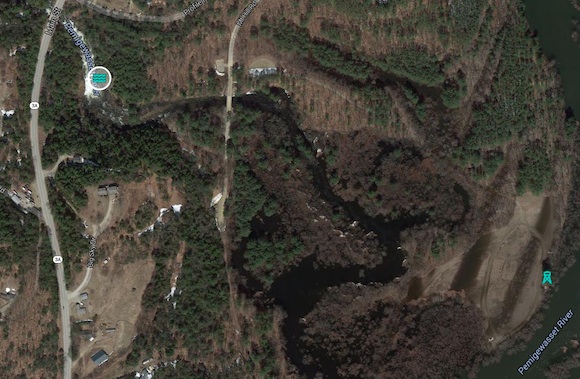
Here’s where we were. Click the image. It takes you to an interactive map you can zoom in and out to see where this magical place is.
I had been begging Jim to take me on one of his outdoor radio adventures. Just two days before I had tried to tempt him to do a six-hour trip to the seacoast to do QRP outdoor radio.
Because the trips are small, I called them dXpeditions instead of the grand DXpetitions that are real honest adventures.
A dXpedition with QRP radio? Calm winds. The sun is blasting out infrared waves like water from a fire hose. My first QRP outing with my mentor?
Only an idiot or someone who’s incarcerated would say no to that. Fortunately I make my own hours and don’t wear an ankle GPS device stamped “Property of the Belknap County Sheriff”, so it was an easy decision.
“Okay. Sounds good. I’ve got to go top off the battery in my HB-1B. Where do you want to meet in Bristol?”
“Bring some matches so we can start a fire. Be on 146.52 and we’ll talk ourselves in.”
“Oh, I’ll bring some firewood too.”
“We don’t need firewood. There will be plenty there.”
Obviously Jim was in a daze about what deep snow does to wood. Several things come to mind:
- it buries it
- it can encase it in ice this late in the winter
- it soaks it with water making it impossible to ignite
What Jim didn’t know is that I was fascinated with everything fire as a youth. I became an expert at starting campfires on all my Boy Scout campouts.
If a fire is involved in some outdoor activity and the temperature is 60F or below, that’s like icing on the cake for me. That inner Boy Scout in me was screeching to get going.
In my garage I’ve got a dandy box of kindling wood. In the box are slats of oak from shipping pallets. I quickly cut them up into 7-inch long strips of different sizes and stuffed them in a thin cardboard box. The cardboard would help get the oak burning. I put this box in my backpack so Jim wouldn’t see it.
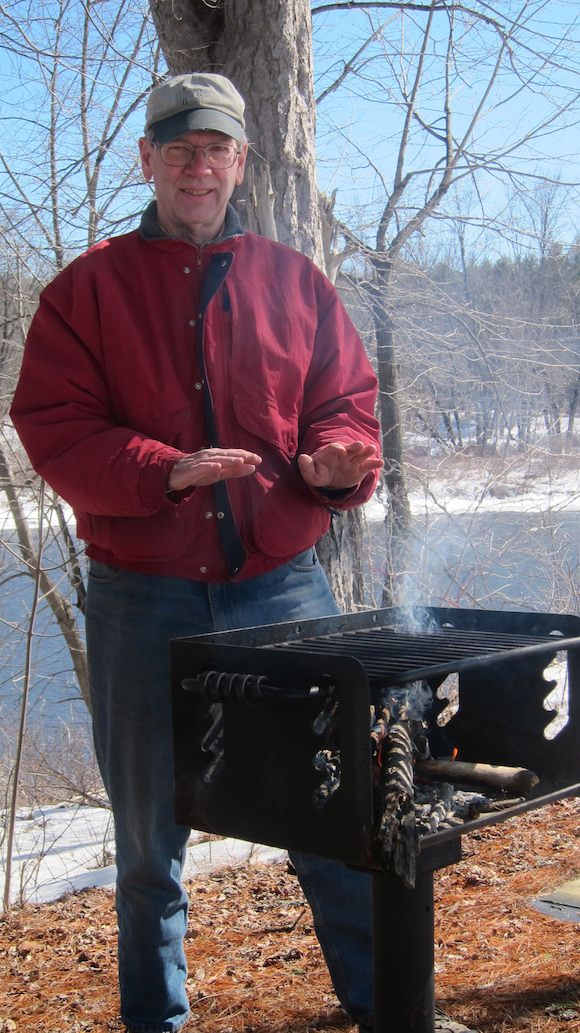
Here’s the fire Jim, W1PID, ended up building while I was trying to make QSOs. Photo credit: Tim Carter, W3ATB
I have a special Klein tool backpack that’s perfect for taking on outings like this. It’s got all sorts of great compartments and holds everything I need for an afternoon doing outdoor ham radio.
Jim’s a fantastic mentor. I’m so very lucky to have him help me. He’s got a great sense of humor and loves to tease me. I’ve been told I’m an easy target because I don’t get offended by jokes and general sarcasm.
He and I are exact opposites. I’m the type of person that will talk to you on an elevator. Jim’s not one to do that and he’s very much a private person. That’s okay. We need all kinds in the world. I’m blessed that he’s decided to share his wealth of ham radio and outdoor skills with me.
I also feel Jim’s a magician for any number of reasons. Magicians are masters of illusion. A great magician will never ever do the same trick twice, nor will he tell you how magic’s done.
Jim treats some information like magic. It’s not important for me, or others, to know all the details. If you were to ask Jim, I suspect he’d just say certain details just get in the way. Or he might be like my old German plasterer, Jack Betsch. Jack’s favorite line was, “Less said is better.”
Realize Jim’s an expert operator and loves outdoor radio, QRP and Morse. Suffice it to say, all those things I enjoy as well. Morse to me – and I’m just beginning my journey – is mesmerizing. I find it challenging and mystical at the same time. There’s something magical, in my opinion, communicating using a simple interrupted tone.
Before long it was time to leave. I double checked and had all my gear, sunglasses, and my high-visibility heated Milwaukee jacket. I didn’t think I would need to turn it on, but one never knows. I had no idea where we’d be operating from, so I wanted to be prepared for anything.
“W1PID, W3ATB calling.”
Jim came back right away. “Meet me in the Park-n-Ride lot next to 1-93. We’ll take just one car from here.”
I pulled into the parking lot, grabbed my gear and jumped into Jim’s nice red Subaru Outback. He had a big smile on his face and I thought I could sense he was as happy to be going on the outing as I was. Before long, we were in Bristol, NH hunting down the Pub and Pizza restaurant.
Lunch flew by with our conversation touching on a multitude of topics including hungry zombies flowing up from Boston, MA. Once we boxed up Jim’s leftover mushroom pizza, it only took a few minutes to get to the parking lot below the stunning Profile Falls. Jim is intimately familiar with the area as he hikes, rides his bike and does outdoor radio in this area almost year round.
The trail from the icy parking lot was packed snow, but I wore my Kathoola microspikes anyway. A few years back I slipped in similar conditions and hit my head hard on some glare ice hidden under the innocent snow. No way would I ever take a chance like that again and I’ve discovered the microspikes are simply wonderful accessories to prevent falls on ice.
Within five minutes we broke out of the woods to a giant clearing next to the crystal-clear waters of the Pemigewasset River. The sky was so blue it hurt your eyes to look at it. I spied two picnic tables under an 80-foot pine tree.
“That’s where we’ll set up,” Jim said.
The snow was still deep on the level ground and fortunately quite hard. Only now and then would my foot sink in about 6 inches.
But surprisingly, at the picnic tables, there was no snow on the ground nor on the tables. Everything was dry as a bone, including a thick bed of pine needles and leaves that hung around since last fall. What’s more, I spied plenty of dead branches scattered about that would be ideal for a fire. No wonder Jim told me not to bring firewood.
“You set up at this table. See that one branch up there? I want you to get your antenna up there so it drops straight down to the table. You only get three chances. After that, I’ll take over.” Jim knows that my par end-fedz multi-band antenna works best when it’s nearly vertical.
Jim brought all his own gear and was set up and ready to operate before I had my microcord unwound. My first attempt at slinging the partially-filled water bottle generated a huge belly laugh from Jim because I let the cord go an instant too soon. The bottle sailed over a much lower branch.
“Remember, if you can’t do it, I’ll get it up there for you.” This teasing comment was followed by his loud laughter that probably echoed throughout the river valley. I didn’t need to be reminded about how I was still a newbie at slinging water bottles up into trees.
I would have joined in the laughter, but I was too intent on getting the partially-filled water bottle over the branch.
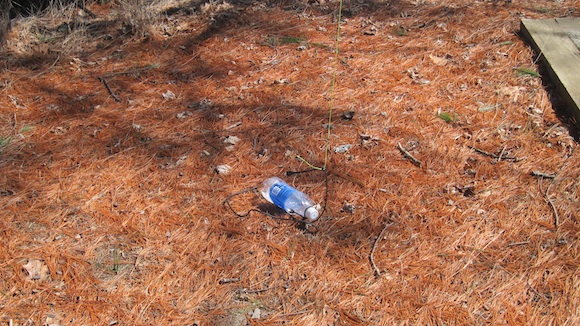
Here’s my water bottle in the soft pine needles under the giant tree. It was a perfect throw over the branch 30 feet above me if I don’t say so myself! Photo credit: Tim Carter, W3ATB
Bingo! My second throw was perfect. I got the water bottle up over the correct branch and moments later lowered it to the ground. Within minutes my 125-feet of 1/16-inch microcord was operating as a handy halyard pulling my par end-fedz multi-band antenna into position.
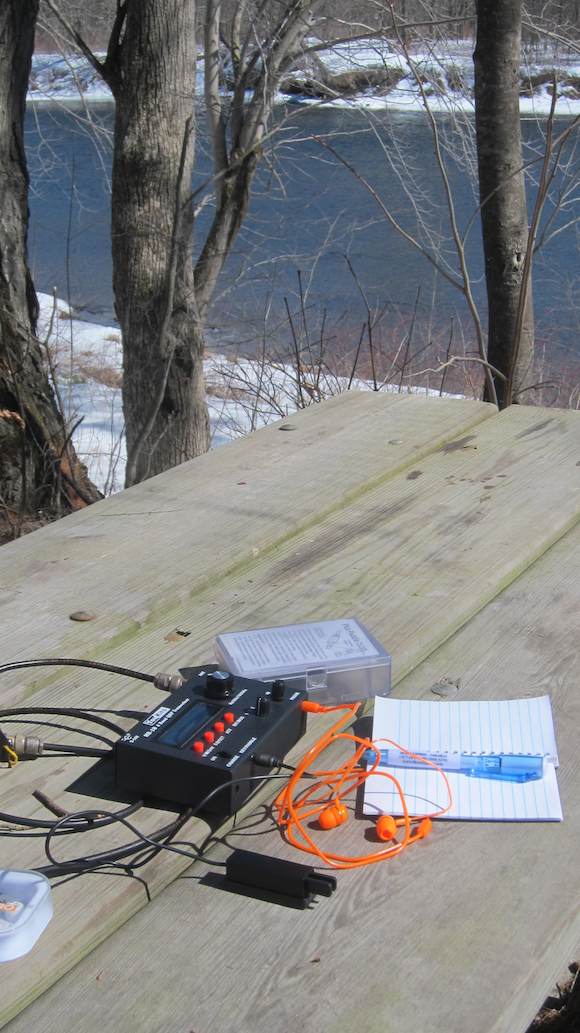
I was ready to go. Here’s the HB-1B, earphones, my micro Pico paddles, notebook and pen. Photo credit: Tim Carter, W3ATB
I had my HB-1B unpacked in no time as well as my small Pico paddles. I was ready to go.
While I was doing all of this, Jim had already worked at least two Russian stations and I believe one in Belgium. He’s very very talented and just snags other stations when they finish up a QSO with someone else. He rarely sends out a CQ.
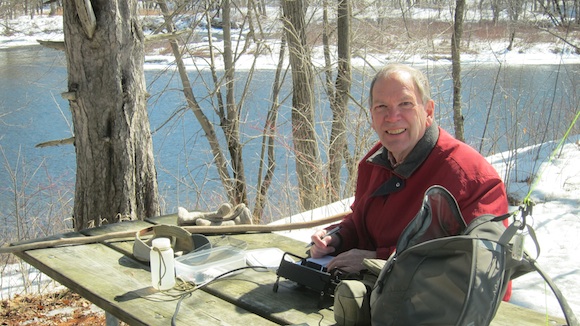
Here’s Jim, W1PID, snagging far away stations faster than I can send CQ and my call sign. Photo credit: Tim Carter, W3ATB
“Why are you sending CQ?” Jim could hear my CQ CQ CQ ghost signals on his rig.
“You don’t send CQ. You go find a strong signal and then work him. Sending CQ is a huge waste of time. When you hear a station strong here, there’s a great chance he’ll hear your weak 5-watt signal.”
Can you see why I’m so lucky to have Jim as my mentor?
He sat down next to me, took over my rig and within minutes worked W1AW/8 in OH. Jim told me this operator was part of a club participating in an ARRL Centennial contest trying to make contacts in all the states.
“Go ahead. Work him now. Send him a 599 and be sure to add NH. He’ll know what’s going on.”
I did as commanded and BOOM, had my first QSO by the Pemi. The sun reflecting off the gurgling water of the Pemi made it look like a thousand diamonds were shimmering on the surface. It was a perfect environment to capture my first NH outdoor radio contact. To say it was very satisfying, would be a gross understatement.
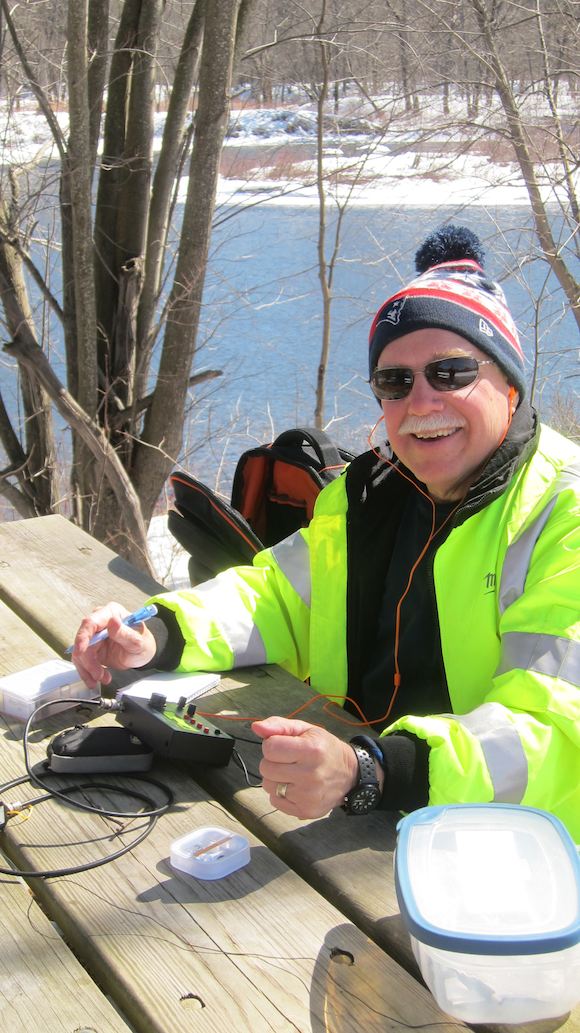
That’s me! I’ve got a smile on my face because of the weather, the company and I just completed my first outdoor QSO next to the Pemi! Photo credit: Jim Cluett, W1PID
“Go ahead and work some other stations. I’ll start a fire.” Jim already had satisfied his QSO appetite and was thoroughly enjoying watching me, the grasshopper, get one or two more.
“Where are the matches I asked you to bring?”
“Oh, they’re in my backpack. Get out that cardboard box too.”
Jim opened my backpack and pulled out both the matches and the box and said, “What’s the box for?”
“Open it and see.”
Jim opened the flap, shook his head and mumbled, “I thought I told you not to bring firewood.”
“How was I to know we’d be in a location where a giant pine tree would act like an umbrella?” The 80-foot-tall evergreen we were under did a magnificent job of deflecting most of the snow. Jim, of course, knew this was the case as this picnic area was as familiar to him as his own backyard.
Soon I smelled the fragrant aroma of a fire that was roaring inside a metal cooking stand positioned next to the picnic area. Jim had a splendid fire going using all natural materials to start it. Not one piece of my oak or cardboard was used to build the blazing fire.
The sun, the smoke, the companionship of a mentor that has the patience of Job and a sense of humor dryer than a tub of alum was the ideal brew for the soul on this spectacular late-winter day.
An hour passed like it was five minutes. I gathered two other QSOs and it was time to pack up to go back.
Jim and I walked 500 feet downstream in the deep snow that was now softened by the sun so that every now and then we sunk down 8 inches or so. He wanted to show me another location where he and N1LT and W1JSB had operated alongside the Pemi and where the smaller Smith River surrenders itself to the much larger Pemigewassat River.
As we were walking back, Jim proclaimed, “You know at the end of the day it’s been a good day when you’ve had fun in the middle of the day.”
I’ll second that. Thanks Jim for inviting me to one of your very special places to gather invisible radio waves from the brilliant blue sky. It’s a day I’ll never forget.








